This Paleoartist Recreates Prehistoric Fauna: 12 Ancient Creatures For The 2025 Calendar
Categories: Animals | Art | Design and Architecture | Nature | Photo project | Technology | World
By Vika https://pictolic.com/article/this-paleoartist-recreates-prehistoric-fauna-12-ancient-creatures-for-the-2025-calendar.htmlThe 2025 Prehistoric Pocket Calendar is here, created by Roman Uchytel. It features 12 new illustrations of prehistoric animals, each carefully reconstructed to show what these creatures might have looked like. The calendar also includes spaces for notes and relaxing coloring pages, making it both useful and fun.
This year, Roman has added something special: QR codes that link to new reconstructions of these animals. These codes let you discover even more about the prehistoric world, bringing the past to life in a whole new way. Scroll down to see images from the calendar and learn more about these incredible creatures!
More info: Instagram | uchytel.com
12 PHOTOS
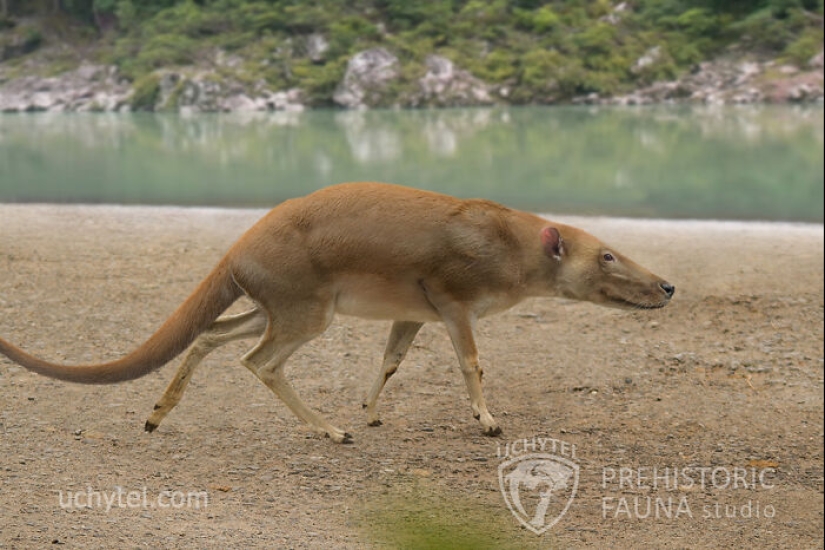
#1 Indohius
Translates to ‘Indian pig’, but it has nothing to do with pigs. It's a future whale.
The 2025 Prehistoric Pocket Calendar is available on Amazon for both the US and European markets. This makes it easier to get a copy with lower shipping costs, no matter where you're located. You can find it on Amazon US here and on Amazon Europe here.
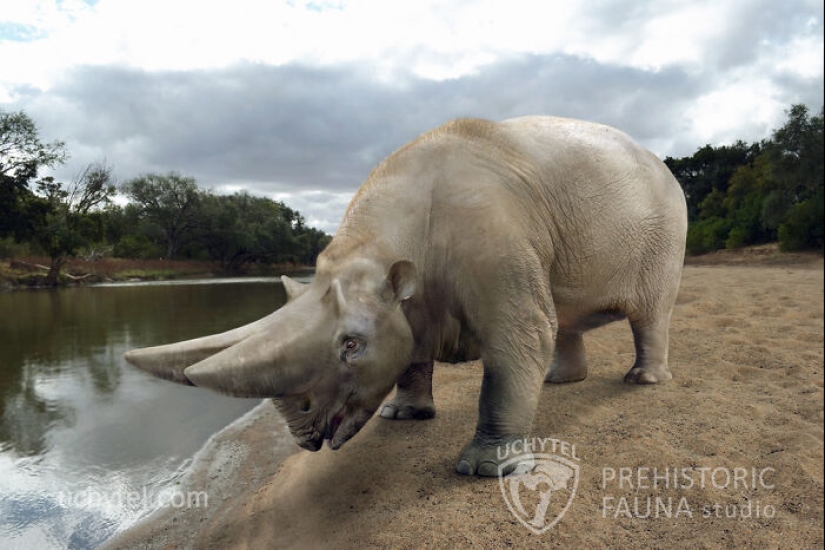
#2 Arsinoitherium
Looks like a rhinoceros, yet it is the closest relative of hornless elephants, sirenians, and hyraxes.

#3 Macrauchenia Patagonica
Looks like a camel, but according to recent findings, it belongs to a unique group of South American ungulates, with its closest modern relative being the horse.
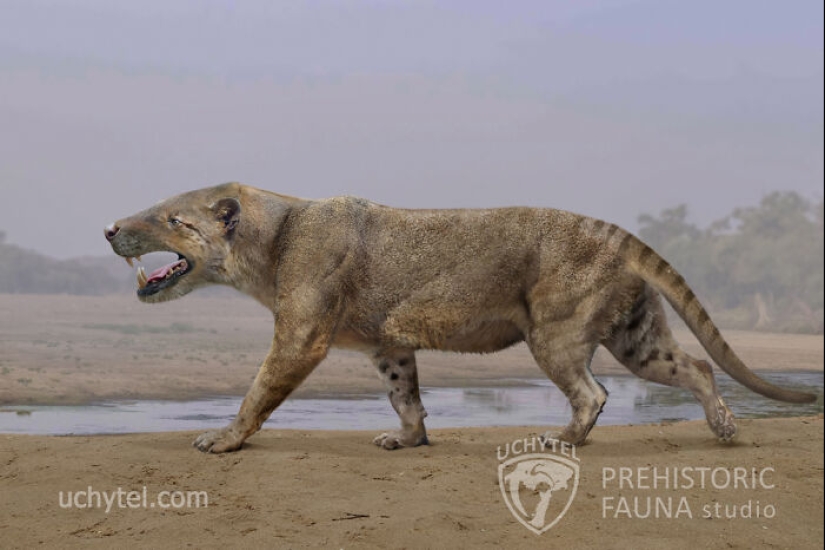
#4 Simbakubwa Kutokaafrika
Despite its appearance and the well-known ‘lion’ name simba - is not related to lions. This hyaenodont is also unrelated to either cats or dogs. It was possibly the largest known predator among mammals, though, sadly, it left no descendants.
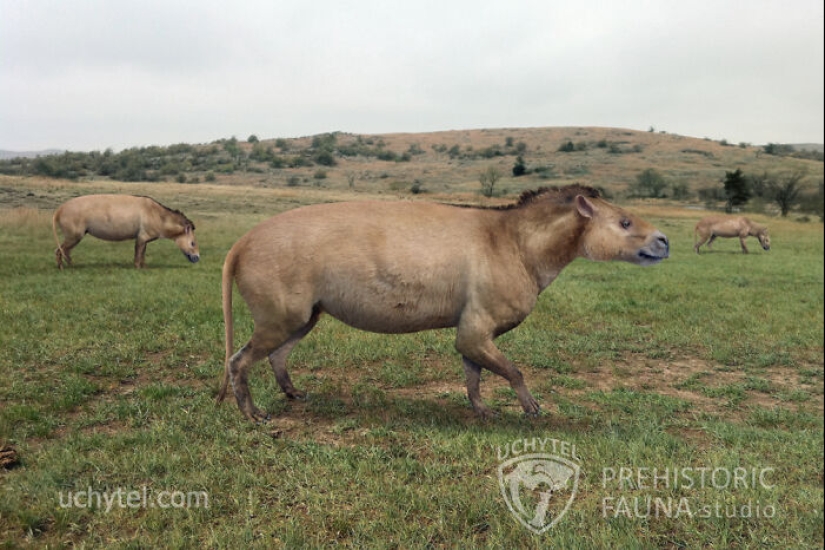
#5 Merycoidodon
Looked like a small, stocky horse, but it was not related to horses. It was a member of the oreodonts, whose closest relatives are camels.
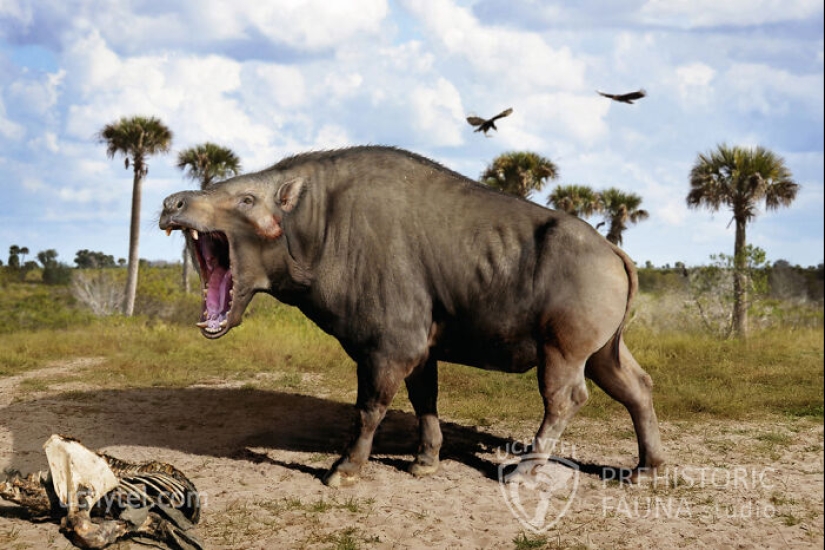
#6 Daeodon
Looked like a giant boar (earning it the nickname ‘hell pig’), although it has no relation to pigs. Its closest living relatives today are whales and hippos.
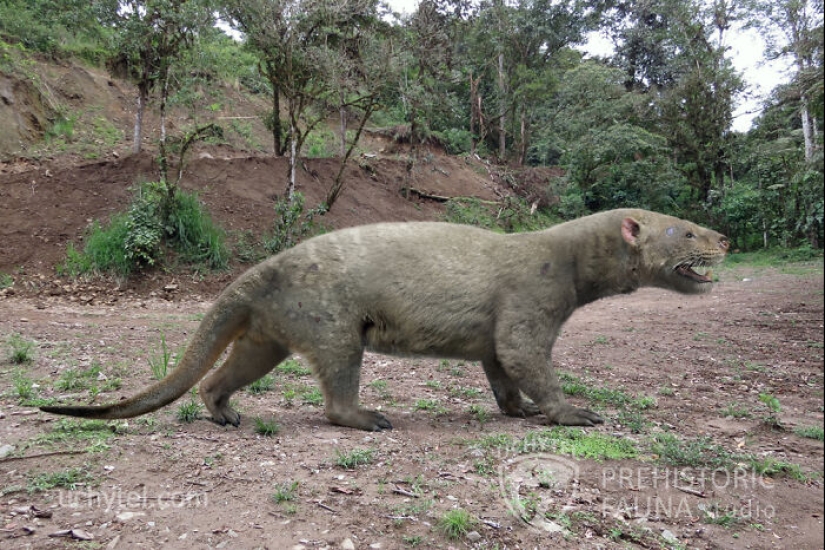
#7 Proborhyaena Gigantea
Despite the presence of the word ‘hyena’ in the name of this extinct animal, it had nothing to do with hyenas. This is a huge relative of marsupials, resembling the Tasmanian devil both in appearance and possibly in behavior.
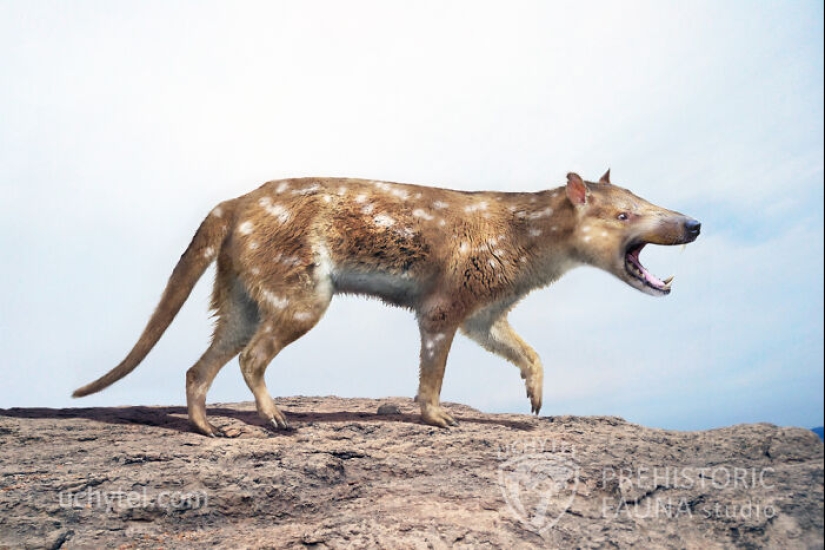
#8 Sinonyx
Was a hoofed predator, which sounds unusual in itself. It looked like a dog, yet its closest relatives were deer and other even-toed ungulates.
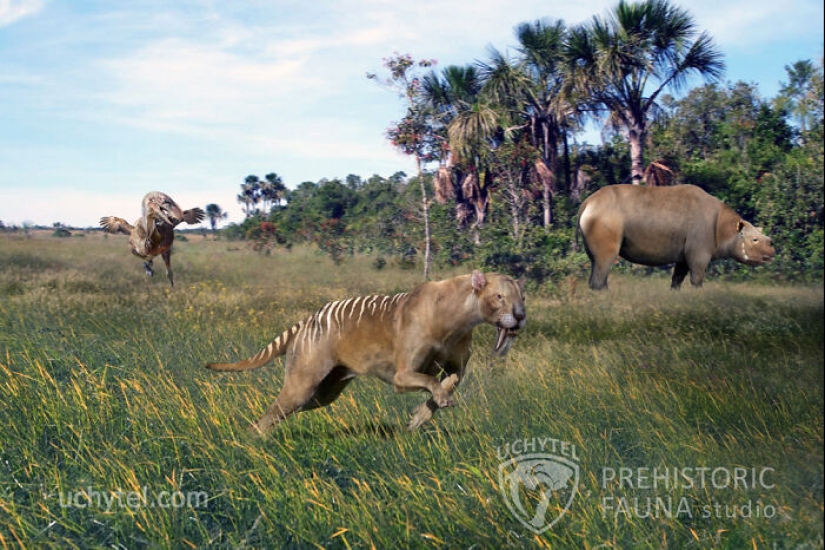
#9 Thylacosmilus
Also called the ‘marsupial saber-toothed tiger’, although it has nothing to do with cats. Rather, it can be called an overgrown saber-toothed possum.
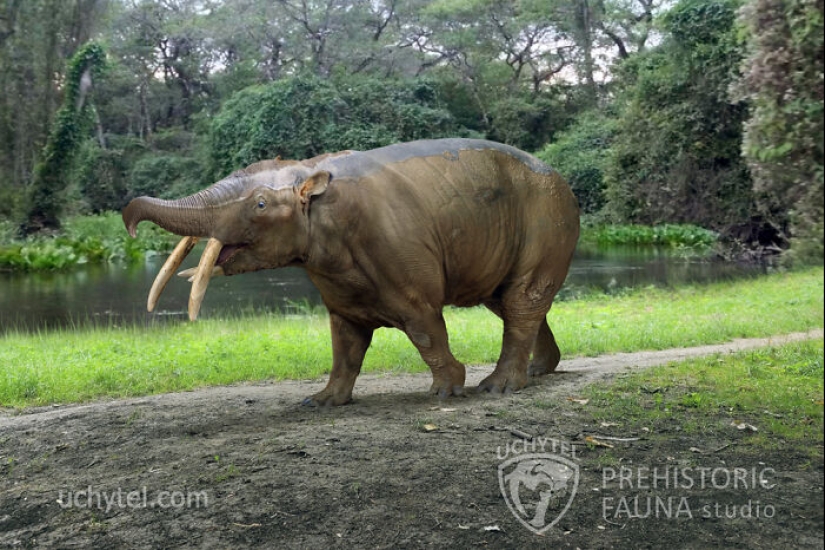
#10 Granastrapotherium
Looked like an elephant but is not related to elephants. Its modern relatives are horses, rhinos, and tapirs. It belongs to an unusual South American group called Meridiungulate.
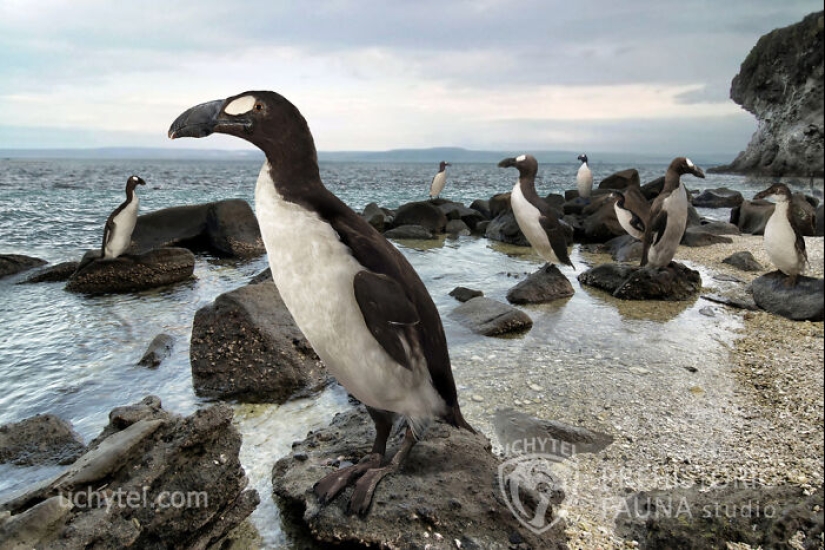
#11 Pinguinus Impennis
Also known as Alca impennis or the Great Auk, looked very much like a penguin, and its Latin name reflects that resemblance. However, it was not a penguin but the closest relative of modern, flight-capable auks. Moreover, it lived in the Northern Hemisphere, while all known penguins have remained in the Southern Hemisphere.
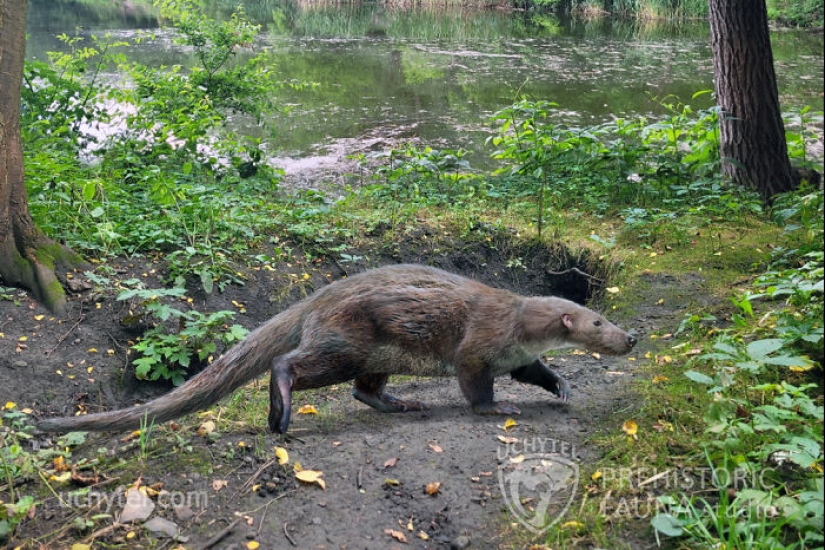
#12 Buxolestes
Looked like an otter but was unrelated not only to modern otters but to other existing animals as well. These creatures appeared long before the rise of modern caniforms (Caniformia), the group that includes otters. Unfortunately, they left no descendants. Buxolestes represented nature's first attempt at creating semi-aquatic predators, but modern otters eventually evolved from newer, more advanced animals.
Keywords: Prehistoric Fauna | Fauna | Nature | Ancient creatures | Roman Uchytel | Paleoartist | Illustrations | Prehistoric animals
Post News ArticleRecent articles

Photographer Dylan Hamm has been wondering for a long time how many microexpressions our face takes that we don't even know about. ...

New Jersey photographer Robin Schwartz photographed her adorable daughter Amelia with a variety of animals from 2002 to 2015. The ...
Related articles

Sandy beaches grey, brown or even white shade is quite usual for us. Even rocky beaches with sharp cliffs that attract the bravest ...

The world community was shocked when in 2007 a dirty naked woman was found in the Cambodian jungle, who did not speak, could not ...

Polish photographer David Kashlikowski took amazing pictures of a glacier in the Karakoram mountain system in Pakistan from a ...

For an art project called Metamorphosis, body painters Léonie Gené and Jörg Düsterwald collaborated with photographers Laila ...